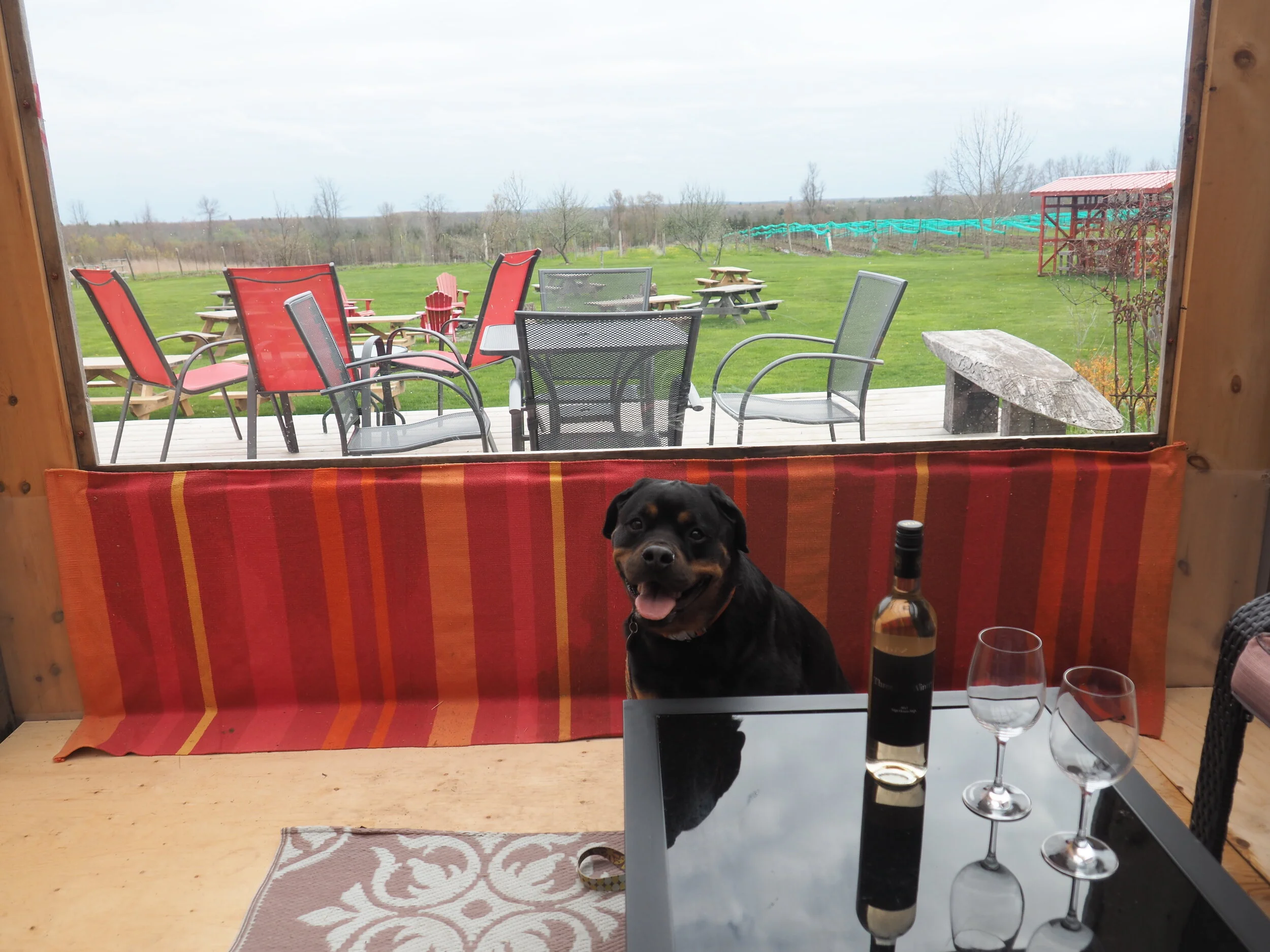Is your dog ready for moving day? (Photo: small dog stands on grass in front of a house)
Are you moving soon? If so, you’re most likely stressed out. If you want to know how to keep yourself and your dog stress-free leading up to moving day, check out last week’s blog: https://beyonddogtraining.ca/news/how-to-introduce-your-dog-to-your-new-home-part-1
If you’re worried about how your dog will react to your new home, you’re in the right place.
Will your dog be stressed out on moving day? Do they hate car rides? Is the only place they’ve ever been their own backyard (and the veterinarian?) What about the new home? Do you feel badly because you’ve downsized and are afraid they might miss their yard? Are you super excited to introduce your dog to the new swimming pool, but kind of scared because they don’t really know how to swim?
You want your dog to feel happy and relaxed on moving day. A lot of people think that talking in a high-pitched voice and tossing treats into the backseat like strange confetti, will make their dog feel at ease. This actually has the opposite effect, by making an excited dog more excited and a fearful dog more confused and afraid.
Talking in a high-pitched voice may make you feel better, but it doesn’t help your dog feel calm (Photo: Pomeranian with whale eye)
Here are a few steps to make moving day easier on everyone:
EXERCISE - Your dog needs daily exercise and so do you. Take a structured walk first thing in the morning on moving day. What’s a structured walk? In a nutshell, a structured walk looks like this: You lead the way, your dog follows beside/slightly behind you, and you allow them to take sniff breaks, bathroom breaks, and bounce-around-chasing-butterfly breaks. Read more here: https://beyonddogtraining.ca/news/give-your-dog-a-break
BREATHE - Your dog picks up your vibe. If you’re sitting in the front seat worrying about traffic, unpacking, and whether or not your dog will eat dinner in the new house or not, your dog will sense your nervousness and happily take over the leadership role in your relationship. This could look like: herding the children when you reach your destination, barking at strangers and dogs who come over to the house to meet you, or chasing the cat all over the new apartment. Not cool. Try to enjoy the car ride — unroll the windows and breathe the fresh air, listen to music, or play a fun game with your kids.
Relax and enjoy the ride. Your calm energy will be passed along to your dog. (Photo: woman in the passenger seat with her head and arm stretching out of the window)
3. WALK - When you arrive to your new home, walk your dog around the property and the neighbourhood. This allows them to burn off energy from the car ride and to be introduced to their new environment calmly.
Walk your dog BEFORE introducing them to your new house (Photo: person walking a white French Bulldog in front of a bright yellow house)
4. FIRST - It’s not a race, but you need to enter the house first. Dogs view the world differently than we do.
5. CALM and CONFIDENT - The easiest way for your dog to feel calm and secure about moving day is for everyone in his human family to be calm and confident. The quote from the Navy Seals: “Calm breeds calm, panic breeds panic,” may help you to visualize the situation. If I walk into an elevator and begin pacing, acting nervous, and wringing my hands together, how will you feel? Panicked. If instead, I walk into the elevator and give you a confident smile, nod my head, and mind my own business, you will feel calm. Your dog is a master of reading your moods and feelings. Work hard to find happiness and balance in your life, and then watch your dog’s behaviour adjust like magic in front of your eyes.
Calm breeds calm (Photo: Yellow Lab relaxes on his owner’s legs.)
If you’re stressed out because your dog barks at everyone who walks by your current house, guards the fence in the backyard like a police dog, and won’t get off the couch when you ask them to, there’s still hope. Leadership doesn’t happen overnight. If you’re moving and want to prepare yourself, your family, and your dog for this big change, call a dog behaviourist and begin working on any issues you and your dog are currently facing at least one month in advance of the move.
Any behaviourist or trainer worth their salt will help you gain the leadership role in your household before you move, and equip you with a game-day strategy for moving day that works best for your unique lifestyle.
We hope that you enjoy moving day and that you have fun exploring your new neighbourhood with your dog.
Alyssa
Photos by: Natalia Shiel (small dog stands on grass in front of a house,) Michelle Tresemer (Pomeranian with whale eye,) averie woodard (woman in the passenger seat with her head and arm stretching out of the window,) Harry Cunningham (person walking a white French Bulldog in front of a bright yellow house,) and Taylor Kopel (yellow lab relaxes on his owner’s legs.)
























































